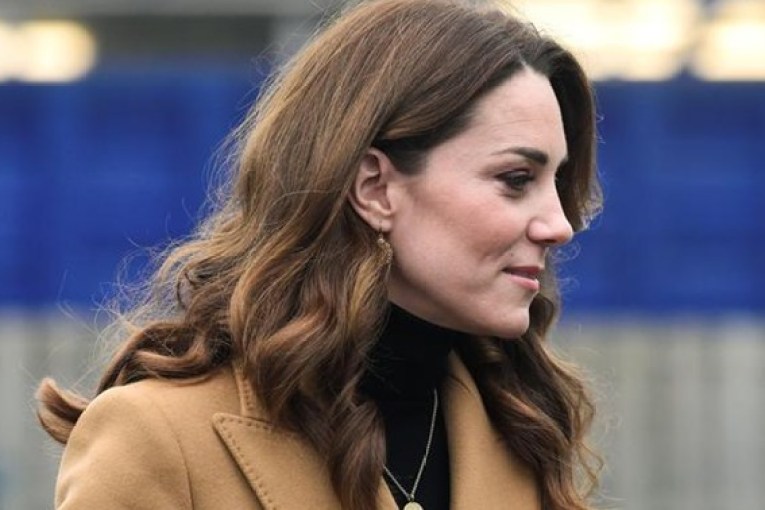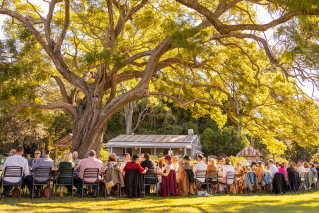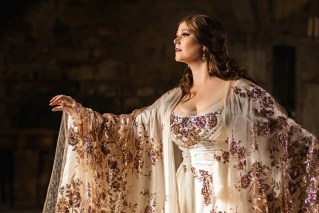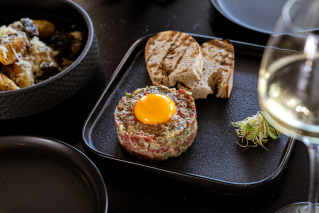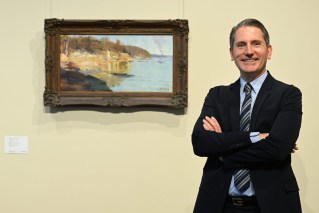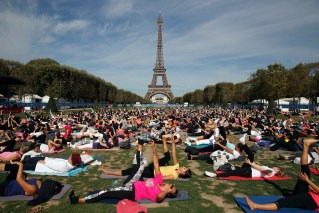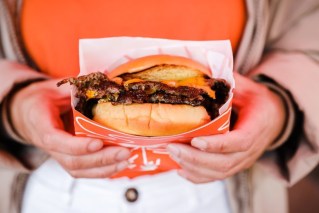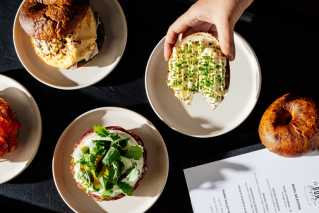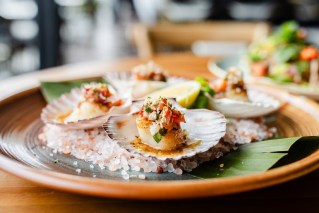Through the looking glass: Exhibition puts dark history in focus
Master glass-blower Yhonnie Scarce’s latest exhibition Missile Park is an ode to the Indigenous Australians affected by British nuclear testing near her home in Woomera, where the desert turned to glass under the extreme heat.
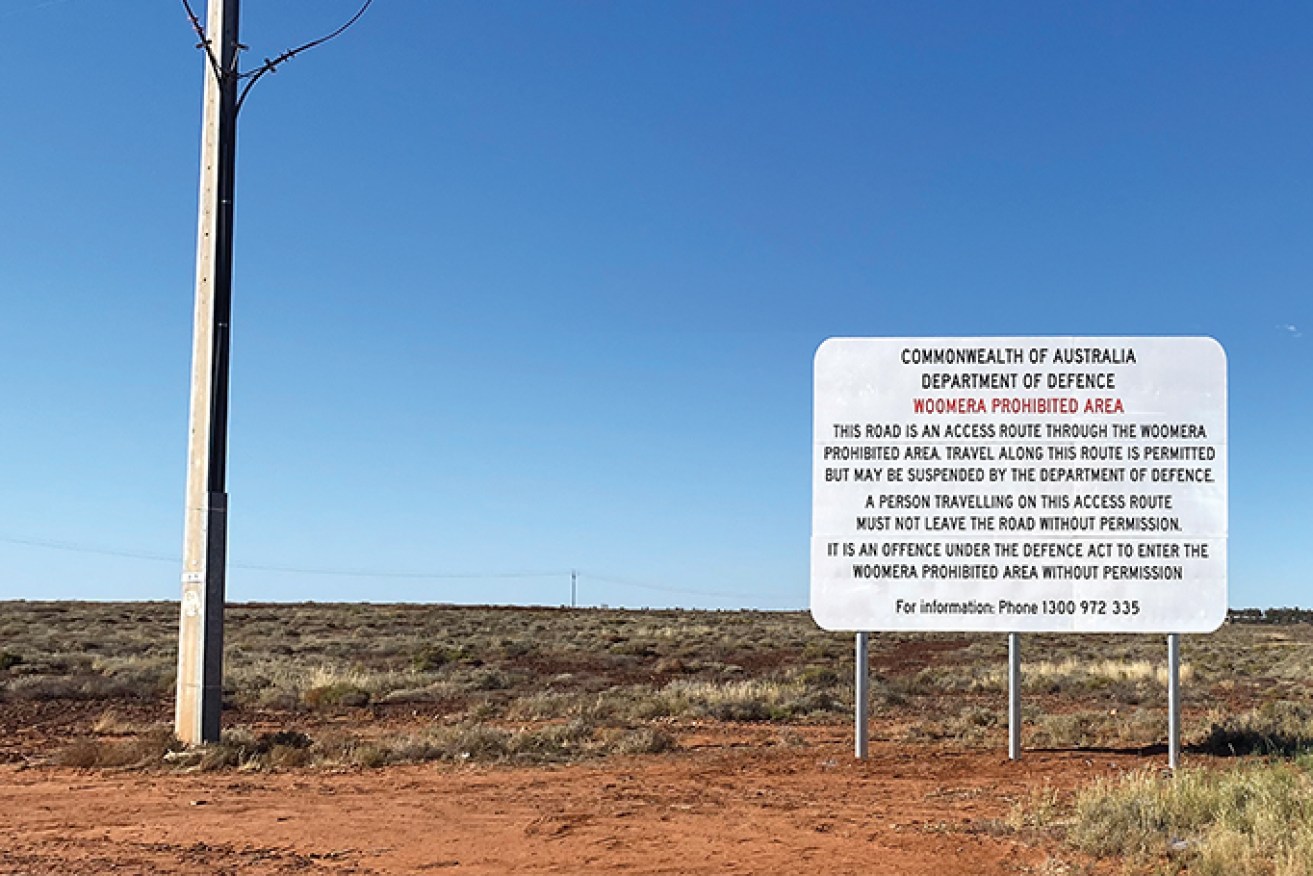
Yhonnie Scarce, 'Prohibited Zone, Woomera', 2021, research photograph. (Image: Yhonnie Scarce and THIS IS NO FANTASY, Melbourne)
Aboriginal and Torres Strait Islander readers are advised that this article references deceased persons.
Yhonnie Scarce’s latest exhibition is something of a homecoming but one imbued with a dark history.
An Aboriginal Australian woman of Kokatha and Nukunu descent, Scarce was born in Woomera – site of British Nuclear Testing throughout the 1950’s and 1960’s.
12 nuclear bombs were tested in Maralinga, which translates to ‘thunder’ and is part of the Woomera Prohibited Zone, which led to the forcible removal of the Anangu people, a number exposed to radiation, and ecological fallout which remains today.
Scarce said Missile Park is a physical ode to the Indigenous lives lost and covered up during this time.
“I wanted to create a space, a memorial or place for people to acknowledge the history of the military involvement in the nuclear test and the treatment of Aboriginal people and the cover up Aboriginal deaths,” she said.
The exhibition is a survey of Scarce’s last 15 years’ work but includes the commissioned piece Missile Park which includes three black sheds, replicas of disintegrating military structures, which each contain 20 bush plums blown from glass.
“The sheds themselves are tombs. It is part of that cover up. The bush plums situated in each shed are truth bombs, sitting and waiting for this history to be uncovered,” said Scarce.
“You are invited to enter one of the sheds, close the door behind you, and spend some time inside that shed. It’s important that the audience is allowed to enter the shed and engage physically with the work.
“I’m a big believer that it’s always a matter of time before these things come to light.”

Yhonnie Scarce, ‘Missile Park’, 2021 Australian Centre for Contemporary Art, Melbourne. Courtesy the artist and THIS IS NO FANTASY, Melbourne. (Image: Andrew Curtis)
Missile Park is the latest work in Scarce’s artistic catalogue, one which frequently tackles the ongoing effects of colonisation on Aboriginal peoples, and the fallout from the nuclear testing at Maralinga.
Scarce’s process while creating these works involves rigorous academic research which she conducts through field work but is also inspired by family histories and stories passed down through generations, which will be exhibited in works such as Dinah (2016) and Working Class Man (2017).
“Granny Dinah is an archival image from the Koonibba Mission. The photo of my grandfather is from our family collection as part of Working Class Man which is a photograph of him working in the Opal fields in South Australia.
“The exhibition is about how amazing Aboriginal people are, how resilient we are, how good we are at what we do. It’s important that some of my family are in the exhibition because that’s where it began, my elders are in the exhibition so it’s something that I’m really proud of.”
For Scarce, the light and heat innate in glass-blowing reflects the subject matter she frequently tackles, with reports of the sand in Maralinga turning to glass under the extreme heat and pressure of the nuclear testing.
“What I found captivating about glass as a medium was just the sheer fear of it being so hot. But actually, I wasn’t actually scared at all. With glass, it bites you so you learn very quickly.
“I remember the first time the furnace door opened and the furnace was growling. It has a voice of its own when it’s on high fire, you become in awe of it. It’s something else, it’s so beautiful and it’s very seductive.”
Scarce said this exhibition is an acknowledgement of a dark history but also a celebration of the resilience and history of Aboriginal people in the face of colonialism.
“There’s a lot to celebrate as well but it does come from an area of darkness and sadness that needs to be addressed in terms of truth telling and bringing those stories forward.
“It’s a part of healing but also talking about something that is real. The way to move forward is to acknowledge the pain that happened in the past.”
Missile Park opens at the Institute of Modern Art on 17 July and runs until 18 September, for more information visit Institute of Modern Art’s website.
